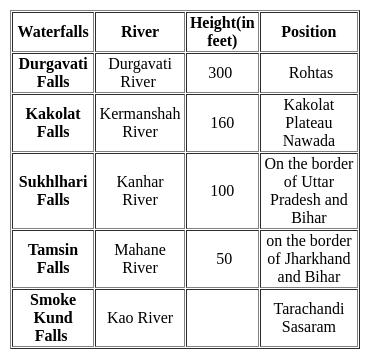Software Development Exam > Software Development Tests > Test: Bihar Specific (Rivers and Water Resources of Bihar) - Software Development MCQ
Test: Bihar Specific (Rivers and Water Resources of Bihar) - Software Development MCQ
Test Description
10 Questions MCQ Test - Test: Bihar Specific (Rivers and Water Resources of Bihar)
Test: Bihar Specific (Rivers and Water Resources of Bihar) for Software Development 2025 is part of Software Development preparation. The Test: Bihar Specific (Rivers and Water Resources of Bihar) questions and answers have been prepared
according to the Software Development exam syllabus.The Test: Bihar Specific (Rivers and Water Resources of Bihar) MCQs are made for Software Development 2025 Exam.
Find important definitions, questions, notes, meanings, examples, exercises, MCQs and online tests for Test: Bihar Specific (Rivers and Water Resources of Bihar) below.
Solutions of Test: Bihar Specific (Rivers and Water Resources of Bihar) questions in English are available as part of our course for Software Development & Test: Bihar Specific (Rivers and Water Resources of Bihar) solutions in
Hindi for Software Development course.
Download more important topics, notes, lectures and mock test series for Software Development Exam by signing up for free. Attempt Test: Bihar Specific (Rivers and Water Resources of Bihar) | 10 questions in 20 minutes | Mock test for Software Development preparation | Free important questions MCQ to study for Software Development Exam | Download free PDF with solutions
Test: Bihar Specific (Rivers and Water Resources of Bihar) - Question 1
Ganga river passes through How many districts in Bihar?
Detailed Solution for Test: Bihar Specific (Rivers and Water Resources of Bihar) - Question 1
Test: Bihar Specific (Rivers and Water Resources of Bihar) - Question 2
Which of the following statements is not true about the Sukhlhari Falls of Bihar -
I. This waterfall is on the river Mahane
II. The height of this waterfall is about 100 feet
III. This waterfall is located on the border of Bihar and Uttar Pradesh
Detailed Solution for Test: Bihar Specific (Rivers and Water Resources of Bihar) - Question 2
Test: Bihar Specific (Rivers and Water Resources of Bihar) - Question 3
Kabartal Wetland was designated as a Ramsar site in 2020. In which of the following states is it located?
Detailed Solution for Test: Bihar Specific (Rivers and Water Resources of Bihar) - Question 3
Test: Bihar Specific (Rivers and Water Resources of Bihar) - Question 4
In which of the following districts river Ganga enters into Bihar?
Detailed Solution for Test: Bihar Specific (Rivers and Water Resources of Bihar) - Question 4
Test: Bihar Specific (Rivers and Water Resources of Bihar) - Question 5
Which of the following lakes is situated in Bihar?
Detailed Solution for Test: Bihar Specific (Rivers and Water Resources of Bihar) - Question 5
Test: Bihar Specific (Rivers and Water Resources of Bihar) - Question 6
In which district is the famous waterfall 'Kakolat' of Bihar located?
Detailed Solution for Test: Bihar Specific (Rivers and Water Resources of Bihar) - Question 6
Test: Bihar Specific (Rivers and Water Resources of Bihar) - Question 7
Which of the rivers flowing from Bihar has its origin in Amarkantak?
Detailed Solution for Test: Bihar Specific (Rivers and Water Resources of Bihar) - Question 7
Test: Bihar Specific (Rivers and Water Resources of Bihar) - Question 8
Barnal Reservoir Scheme is related to which district of which state of India?
Detailed Solution for Test: Bihar Specific (Rivers and Water Resources of Bihar) - Question 8
Test: Bihar Specific (Rivers and Water Resources of Bihar) - Question 9
Karkat waterfall is located in Which of the following states?
Detailed Solution for Test: Bihar Specific (Rivers and Water Resources of Bihar) - Question 9
Test: Bihar Specific (Rivers and Water Resources of Bihar) - Question 10
In Bihar, the rivers belonging to which one of the following groups join the Ganga or its tributaries flowing from the North?
Detailed Solution for Test: Bihar Specific (Rivers and Water Resources of Bihar) - Question 10
Information about Test: Bihar Specific (Rivers and Water Resources of Bihar) Page
In this test you can find the Exam questions for Test: Bihar Specific (Rivers and Water Resources of Bihar) solved & explained in the simplest way possible.
Besides giving Questions and answers for Test: Bihar Specific (Rivers and Water Resources of Bihar), EduRev gives you an ample number of Online tests for practice
Download as PDF




















